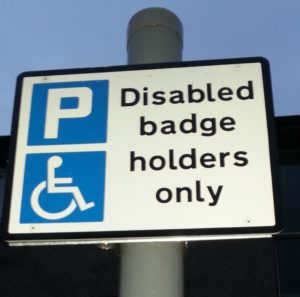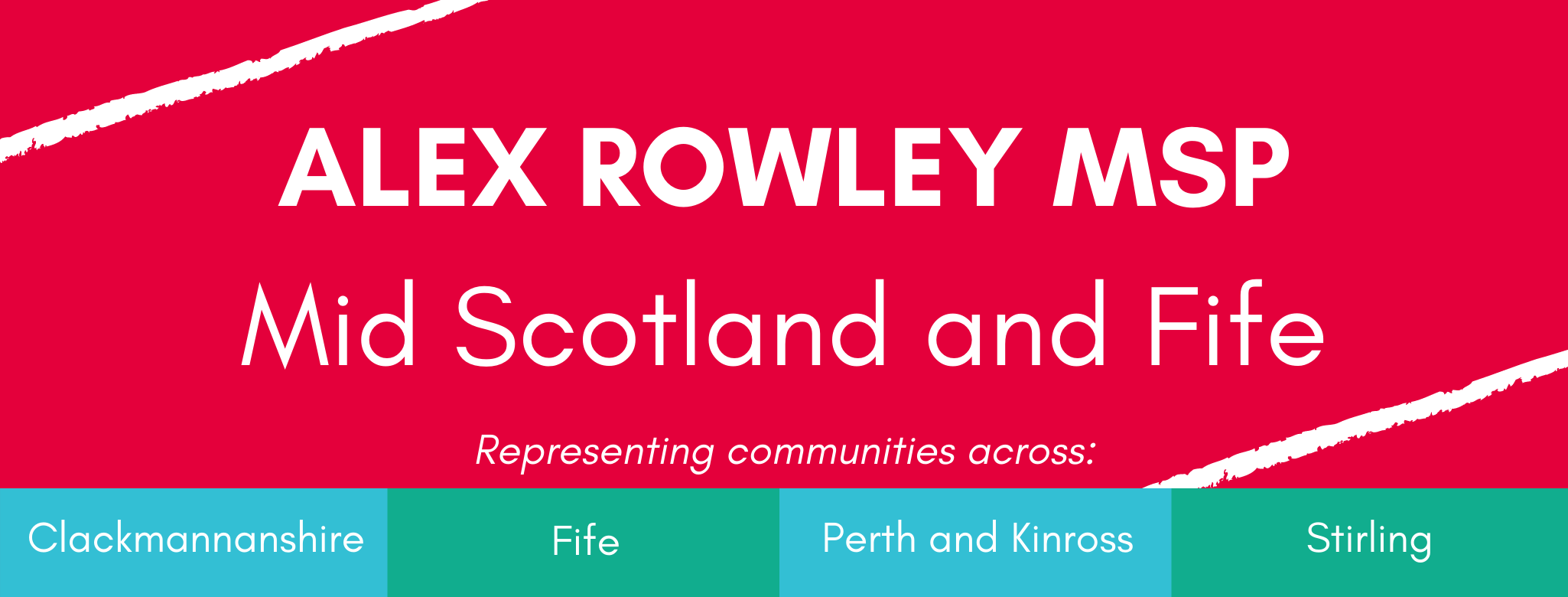
Purpose
To provide background information on the Blue Badge scheme, given the increase in public interest, to assist with response to enquiries from the public.
Key points
Blue Badges (Blue European Parking Badges) are administered by Local Authorities on behalf of the Scottish Government. The scheme has been in place since 1971 and helps people with disabilities to retain their independence by allowing them to park close to where they need to go.
As at 30 September 2012, there were 21,013 badges on issue in Fife (20,827 individual badges and 186 group badges). Around 7,500 applications are processed each year. Badges can be issued to drivers or passengers, adults or children.
The changes introduced by the government this year are designed to make the scheme fairer, tackle fraud and misuse of the scheme, and improve customer service. The Blue Badges themselves have also been redesigned to make them harder to tamper with, copy or forge.
Around 45% of applicants qualify automatically as they are in receipt of the higher level mobility component of the Disability Living Allowance or other qualifying benefit or are registered blind; these benefits are not means-tested. Around 55% of applications are subject to further assessment. These were previously sent to the applicant’s GP for information but are now subject to mobility assessments.
Legislative changes introduced in January 2012, through the new Blue Badge Improvement Service, include:
- A new national format model application form including a new requirement for proof of identity and address. The form is longer and more complex than the previous Fife application form. Applicants will find that the questions asked are looking for more detail about their physical disability and how it affects their ability to walk.
- Local Authorities can add to the model form but cannot change the information requested or the overall format as it mirrors the national online application. In Fife we initially divided the form into separate forms for individuals and for groups and added local contact details and guidance. Following feedback from customers and Local Offices, we have recently introduced separate application forms for those who qualify automatically and for those who require further assessment.
- Application forms are available by phoning the Contact Centre, to download and print from Fife Direct and the national format is available on http://www.transportscotland.gov.uk/road/blue-badge-scheme
- An on-line application can be made on the Direct Gov website although applicants still have to provide proof of identity, address and benefits.
- Applicants can take their proofs to their nearest Local Offices, where they will be verified and returned to them. We previously advised that applicants make an appointment at their nearest Local Office to have their proofs copied and to receive assistance with the form, if required. However the Local Offices now only ask that those handing in and requiring help with the further assessment form make an appointment.
- A national database is now used to process all applications for new, subsequent or replacement badges by all authorities in Scotland.
- Badge holders should continue to use their current old style blue badges until the expiry date shown on the badge and should apply for a new one 6 to 8 weeks before the expiry date.
- The new tamper proof format Blue Badge has been printed and issued centrally since January 2012.
- The mandatory use of independent mobility assessments to assess eligibility for a Blue Badge was introduced from September 2012.
The assessment process in Fife previously relied on information submitted by GPs on applicants’ walking ability; however from September 2012, applications requiring further assessment have been referred to mobility assessors working with the Blue Badge Team. The mobility assessors are a qualified Occupational Therapist and an experienced Physiotherapy Assistant. They review all the applications requiring further assessment and invite applicants to a functional mobility assessment when they consider this is required to make a decision on the application. The mobility assessments are carried out at Fife House, where there is disabled parking and disabled access and where applicants are assessed in the same unfamiliar location to help provide consistency in assessment. Where this causes difficulty, assessments are offered at an alternative Council office, usually a Local Office, but assessments are not carried out at the applicant’s home. Guidance for the Blue Badge mobility assessments is provided in the Scottish Government’s Code of Conduct for Local Authorities.
The Code of Conduct states that authorities may wish to advise applicants that taking account of the possibility of a mobility assessment, it could take up to 28 working days to carry out the relevant validity checks and process their application. It was taking around 6 weeks from receipt of the application to process applications during April, May, June and July when there was a backlog of applications. We have worked to improve this and now process applications within a few days of receipt of the application. Our aim is to process automatic applications within 7 days of receipt and to process those requiring further assessment within 28 working days.
There has been a reduction in the refusal rate in Fife for blue badge applications requiring further assessment following the introduction of the initial changes in January. The refusal rate for the 6 months prior to January 2012 was 11.48% and the refusal rate for January to June 2012 was 9.52%. However it is anticipated that the introduction of mobility assessments will lead to an increase in the refusal rate of Blue Badges. This is as advised by Transport Scotland at the workshops arranged for Local Authorities at the start of this year where it was confirmed that Local Authorities who relied on information from GPs tended to issue more badges than Local Authorities who referred applicants for an assessment of their mobility by a mobility assessor.
We had stopped sending letters to reminder badge holders to apply for a new badge in December 2009 in line with the majority of other authorities. However these letters were reintroduced in December 2011 to tell customers about the changes to Blue Badges. The reminder letters are sent to all badge holders around 8 to 10 weeks before their current badge expires, giving details of recent changes and advising how to apply for a new badge around 6-8 weeks before the expiry date of their current badge.
Important background information
The Disabled Persons’ Parking Badge Scheme was introduced in 1971. It is designed to assist people who have a permanent and substantial disability which means that they are unable to walk or virtually unable to walk. The parking concessions provided by the badge make it is easier for badge holders to visit shops and other public buildings. A badge can be issued for a maximum of 3 years. If an applicant has a temporary but substantial disability which it is expected will last for longer than 12 months but less than 3 years, a temporary badge may be issued. A badge may not be issued for less than 12 months. The Scheme requires an application for a second or subsequent badge to be processed as if it were a new application.
Holders of a Blue Badge benefit from a range of parking concessions including; reserved parking places for badge holders, free parking without time limit at parking meters on-street and “pay and display” on-street parking areas, free parking in many off-street car parks, parking for an unlimited time where others may park only for a limited time, access to some town centres where vehicle entry is restricted, on single or double yellow lines in Scotland without time limit except where there is a ban on loading and unloading and entitlement to a “disabled parking space” in the vicinity of their home.
There is no charge for a Blue Badge in Fife. There are less than 6 Scottish Local Authorities who do not currently charge for Blue Badges. The majority charge the maximum fee of £20.
The Disabled Persons (Badges for Motor Vehicles) (Scotland) Amendment Regulations 2011 (Section 2), states the prescribed definition of a disabled person for the purposes of the Scheme as a person who has “a permanent and substantial disability which causes inability to walk or virtual inability to walk”. This description was changed on 1st April 2011 to bring it in line with the wording used for applications for the Higher Rate of the Mobility Component of Disability Living Allowance and means that some applicants, who previously had a badge, find that they no longer qualify when they apply for a new badge
At present, enforcement is carried out by Fife Constabulary where Traffic Wardens and Police Officers issue Fixed Penalty Notices when enforcing parking contraventions involving the use or misuse of a blue badge. The Traffic Wardens and Police Officers check the details and validity of a badge, if required, with the Blue Badge team in Fife House. When the enforcement of disabled parking is decriminalised during 2012, Penalty Charge Notices will be issued by parking attendants employed by Fife Council.
Reports of suspected misuse are also received from members of the public on occasion. These reports are investigated, which may include a referral to Fife Constabulary, and the majority of reports of suspected misuse result in a warning letter being issued to the badge holder to remind them of the correct use of their Blue Badge.
The introduction of the new national database will give enforcement officers access to the basic details of a badge held in the database and will allow them to check the validity of badges themselves.
Reference material
http://www.transportscotland.gov.uk/road/blue-badge-scheme
- Legislation for Blue Badge legislation
- Scottish Government’s Code of Practice for Scottish Local Authorities – January 2012
- Leaflets for the public including: Can I get a Blue Badge, Rights and Responsibilities for a Badge Holder
www.fifedirect.org.uk/bluebadges





